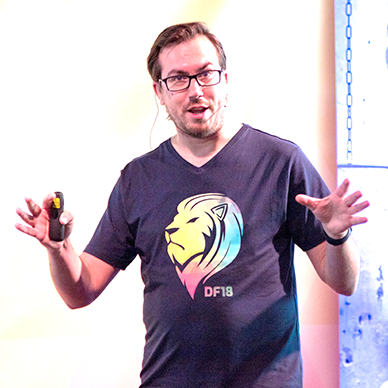News
Q&A with AI Developer Henk Boelman: Hands-On with Microsoft's New AI and IoT Technologies
We caught up with Henk Boelman, Microsoft AI MVP and Cloud AI Architect, to learn more about what's exciting in AI, his favorite features in Microsoft Cognitive Services and Windows IoT and the latest updates on his upcoming day-long hands-on lab for Live! 360, "Build Your Own A.I. Powered Robot."
This AI quick start combines Windows IoT, a Raspberry Pi with some sensors and Microsoft Cognitive Services to help attendees learn how a Raspberry Pi works, dive into topics like face identification and language understanding, and how to train their own vision model.
The Nov. 17 lab at Royal Pacific Resort at Universal Orlando is sure to be a popular session at the show because everyone wants to be able to build their own A.I.-powered robot.
What is your current top favorite feature in Microsoft Cognitive Services?
My favorite is the Microsoft Custom Vision Service. This service enables you to create your own neural networks that can classify your own objects, just by uploading a few sample images containing that object. You can even export these models and run them on your mobile phone or IoT device!
Same question, but for Windows IoT? What's your current favorite feature?
The ability to leverage the Universal Windows Platform. This enables you to create and test applications on your Windows laptop and deploy them to the device running Windows IoT.
Can you talk more about the Facial Recognition API you use for this project and how well it works/its limitations?
We are going to use the Face API from the Microsoft Cognitive Services. This API makes it super easy to use face recognition in your application with just a few calls to the API. You can use it to detect face features like age and gender and to see if someone is smiling. But you can also use it to train your own model that can identify faces in images.
Some developers may not have experience connecting wires and sensors. Any tips?
First of all, it is great fun to make software interact with the world around it, turning on an LED with a few lines of code is awesome. But the programming is like any other program. In the workshop we use wiring diagrams, a great way to start with this.
In your lab, can attendees really build a board that can see and hear things in a day?
In my lab we will start off with an introduction to the platform and walk through the basic, then there are six challenges you explore.
 "The attendees should be able to combine the different features and make a robot."
"The attendees should be able to combine the different features and make a robot."
Henk Boelman, Microsoft AI MVP & Cloud AI Architect
Each challenge focuses on a single problem, like make our Pi see, hear and speak. There is also a challenge on how to train a neural network from scratch to make it read numbers. With this knowledge the attendees should be able to combine the different features and make a robot.
What excites you most about the future of Microsoft and AI technologies?
The most exciting part of AI at the moment is that is out of the research labs and ready to be implemented by a new generation of AI engineers. These AI engineers have the main task to help data scientists to get models into production using engineering principles like DevOps, making the process around these models repeatable and traceable.
Microsoft is offering is putting great effort in making this happen through Azure Machine Learning Services.
About the Author
Becky Nagel serves as vice president of AI for 1105 Media specializing in developing media, events and training for companies around AI and generative AI technology. She also regularly writes and reports on AI news, and is the founding editor of PureAI.com. She's the author of "ChatGPT Prompt 101 Guide for Business Users" and other popular AI resources with a real-world business perspective. She regularly speaks, writes and develops content around AI, generative AI and other business tech. She has a background in Web technology and B2B enterprise technology journalism.